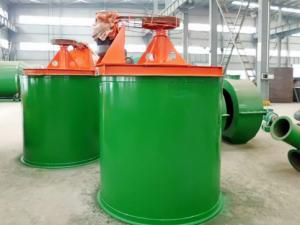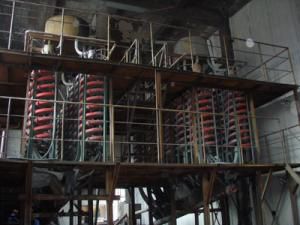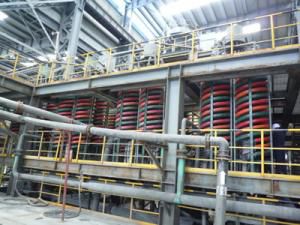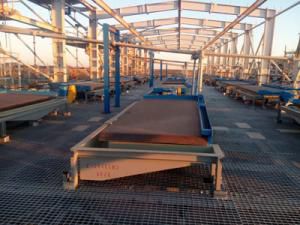Beneficiation shaker is a kind of equipment for separating fine and fine materials with high separation accuracy. It has high enrichment when separating low-grade tungsten and tin ores; The separation efficiency is generally higher than that of other fine-grained gravity separation equipment. What is the separation principle of beneficiation? In view of this, Qinyang Qinlong chemical anti-corrosion will explain it to you.
1. The hydraulic jump formed when the water flows across each bed and the stratification of upward water flow, and the violent shaking of the bed strengthens the disturbance of inclined water flow. The stratification results: low-density fine particles are above, high-density coarse particles are below, while coarse-grained low-density particles and high-density fine particles are basically mixed with each other.
2. The separation effect caused by bed shaking causes the bed to be loose. Under the condition of the same density, the fine particles have greater pressure, the fine particles can enter the lower layer of the bed through the gap of the coarse particles, and the high-density fine particles have greater pressure. As a result, the high-density fine particles drill deeper down than the low-density fine particles. In the separation process, the above two separation functions exist at the same time, and the separation and stratification function plays a leading role. The rising water flow can better separate the low-density substances mixed into the heavy products.
3. Transverse movement of ore particles on the bed surface. The transverse movement of ore particles is driven by the transverse scour flow. The velocity distribution of the transverse scour flow layer along the thickness direction is that the upper layer is greater than the lower layer. Due to the obstruction of the bed strip, the upper material is greatly affected by the transverse scour flow. Therefore, the large particles of low-density matter in the upper layer have a greater transverse velocity than the small particles of high-density matter in the lower layer.
4. The longitudinal movement of ore particles on the bed surface and the asymmetric shaking of the bed surface make the ore particles move forward intermittently. Only when the inertia force of ore feeding particles on the bed surface is greater than the friction between ore particles and the bed surface, can the ore particles begin to slide relative to the bed surface. For low-density ore particles, they move forward, backward and backward The inertia force obtained in the two forward turning stages may be greater than the friction between it and the bed surface, resulting in forward and backward sliding. However, the forward inertial force is always greater than the backward inertial force, and generally moves forward.
For high-density ore particles, only the inertial force obtained at the stage when the bed surface of the beneficiation shaker changes from forward to backward can make it slide. In addition, the high-density ore particles in the lower layer are close to the bed surface and can obtain a large inertial force. The more they are located in the upper layer, the looser the bed, the smaller the inertial force obtained by the ore particles. Therefore, the longitudinal movement speed of high-density ore particles is greater than that of low-density ore particles.











